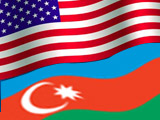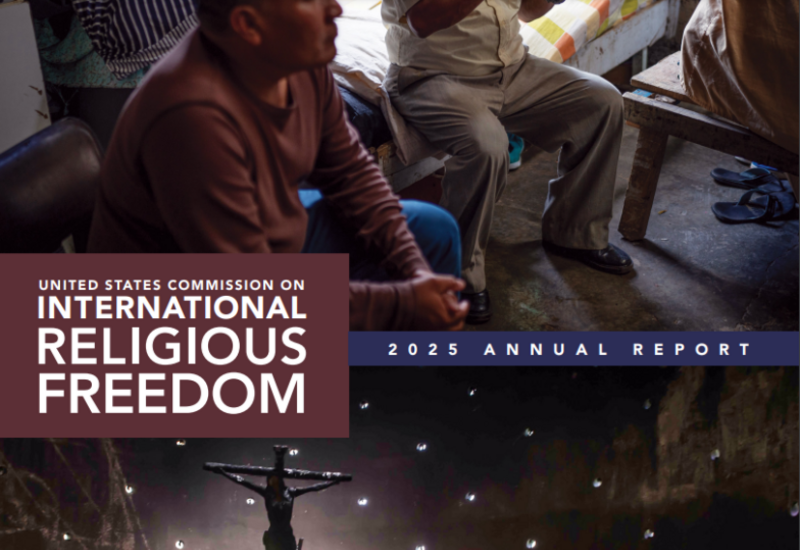|
|
TODAY.AZ / Voice of Diaspora
U.S. Azeris Network launched a campaign of commemoration and recognition of the Azerbaijani genocide
01 April 2008 [01:28] - TODAY.AZ
 The U.S. Azeris Network (USAN) joins the Azerbaijani-American communities across the country, as well as all Azerbaijanis and their friends across the globe and in the Republic of Azerbaijan, in commemorating the great tragedy that has befallen on the people of Azerbaijan through the 20th century, and specifically during the "March days" of 1918. The USAN is expressing its deep sorrow to all the victims and their families.
The U.S. Azeris Network (USAN) joins the Azerbaijani-American communities across the country, as well as all Azerbaijanis and their friends across the globe and in the Republic of Azerbaijan, in commemorating the great tragedy that has befallen on the people of Azerbaijan through the 20th century, and specifically during the "March days" of 1918. The USAN is expressing its deep sorrow to all the victims and their families.On those tragic days in March and April 1918, the Armenian Dashnak forces have committed the biggest genocidal act of the time in the region, by slaughtering no less than 12,000 Azerbaijanis in Baku alone, and later continuing these acts in Guba, Shemakha, Shusha, Naxcivan and other cities across Azerbaijan, increasing the total of deaths to 30,000. This act, explained in vivid details by a major British journalist and historian Peter Hopkirk, was described by him as "genocidal" ("Like hidden fire. The Plot to bring down the British Empire", Kodansha Globe, New York, 1994, pp. 281-287). To commemorate that and other Armenian atrocities against innocent Azerbaijani civilians, the Azerbaijan Democratic Republic (ADR), which was the first Parliamentary democracy in the Muslim world, observed March 31 as the Day of Massacres in 1919 and 1920, thus being the very first political, legal and historical assessment of the tragedy, and preceeding by several decades the politicised counter-acts by other people. Taking into the account that since 1948, the largest crimes against humanity have been defined as "genocide", on the 80th anniversary of the March Massacres that tragedy, along with similar massacres in 1905, 1947-1953, and 1992, were named as the day of the Azerbaijani Genocide.
In light of this, the U.S. Azeris Network launched a campaign of commemoration and recognition of the Azerbaijani genocide. Since the initiation of the USAN campaign on the commemoration and recognition of March 31 as the Day of the Genocide of Azerbaijanis, between March 14-31, the members of the U.S. Azeris Network (USAN) have sent out a total of 2,627 emails and faxes to their elected officials and media. Of the total of 295 distinct recipients from among the elected officials and media, along with the U.S. President and Vice President, 80 were members of the U.S. House of Representatives (Congress), 44 were members of the Senate, and 168 were newspapers across the United States.
The U.S. Azeris Network is committed to its founding principles and goals, and will continue its campaign of public education and grassroots advocacy.
The U.S. Azeris Network (USAN) (www.USAzeris.org http://www.usazeris.org/), is a registered non-profit, non-partisan, non-sectarian genuine grassroots advocacy and voter education network that is facilitating political activism and efforts by the Azerbaijani-Americans and other Turkic-Americans and their associations, organizations, councils, conferences, and other formal, semi-formal and informal groups, on federal, state and local levels. USAN is the first nationwide grassroots organization uniting Azerbaijani-Americans, being created by the grassroots, for the grassroots.
###
The USAN letter that was sent follows:
Dear elected official:
March 31 is known as the Day of Genocide of Azerbaijanis, referring to the tragic events that happened on March 31-April 1, 1918. In one of the first comprehensive scholarly studies of the tragedy, Prof Firuz Kazemzadeh wrote: "This three-day massacre by Armenians is recorded in history as the "March Events" and thousands of Muslims [Azeris], old people, women and children lost their lives" ("The Struggle for Transcaucasia, 1917-1921", New York, 1951, p. 69).
Another distinguished professor was even more blunt: "From 30 March to 1 April 1918, the Tatars [as Azerbaijanis were sometimes called] were attacked. Almost half of the Muslim population of Baku was compelled to flee the city.... Between 8,000 and 12,000 Muslims were killed in Baku alone...." (Justin McCarthy, "Death and Exile. The Ethnic Cleansing of Ottoman Muslims 1821-1922", Darwin Press, Princeton, NJ, 1995, p. 214).
Continues Prof Kazemzadeh: "The truth is that the Armenians, under the guise of Bolshevism, rushed on the Muslims and massacred during a few frightful days more than 12,000 people, many of whom were old men, women, and children...The March Events, as this episode became known to history, touched off a series of massacred all over Azerbaijan."
Rear-Admiral Mark L. Bristol, US High Commissioner (Ambassador) in Istanbul, wrote: "While the Dashnaks [Armenians] were in power [1918-1920] they did everything in the world to keep the pot boiling by attacking Kurds, Turks and Tartars [Azeris]; by committing outrages against the Moslems; by massacring the Moslems; and robbing and destroying their homes. During the last two years the Armenians in Russian Caucasus have shown no ability to govern themselves and especially no ability to govern or handle other races under their power" (US Library of Congress, "Bristol Papers," General Correspondence Container #34). Rear-Admiral Bristol continues, "I have it from absolute first-hand information that the Armenians in the Caucasus attacked Tartar [Azeris] villages that are utterly defenseless and bombarded these villages with artillery and they murder the inhabitants, pillage the village and often burn the village" ("Bristol Papers", General Correspondence: Container #32: Bristol to Bradley Letter of September 14,
1920).
After the proclamation of the Azerbaijani Democratic Republic (ADR) on May 28, 1918, the "March Events" were investigated by ADR Government. In 1919-1920, the ADR observed March 31 as a national day of mourning. This was the first-ever genuine attempt to give political and legal assessment of the policy of genocide against Azeris. No other nation has commemorated genocide as early as 1919 but the Azeris, the first victims of the crimes against
humanity.
Being unable to commemorate the tragedy during Soviet years, observation of March 31 was re-established since, to commemorate not just that particular massacre, but the policy of genocide against Azeris carried out since the 19th century and throughout the entire 20th century, with the final act being the Khojaly Massacre of 1992.
The position of Azerbaijani-Americans is that close to a million Azeris have been massacred in the 20th century as the result of Armenian genocidal campaign. This makes for a total of 2,5 million Azeris, Turks, Kurds, Jews, Georgians, Circassians, Tats, Talysh, Lezgins and other people who fell victim to the Armenian policies of ethnic cleansing for the creation of their state, which was supposed to stretch from the Black sea to the Caspian to the Mediterranean.
We are asking to join the Azerbaijani-American and other communities, and the US Azeris Network (USAN), in commemorating the Azerbaijani Genocide by making a statement for the record in your committees, legislature or newspaper column or Congressional Record. Thank you!
USAN Members
URL: http://www.today.az/news/vdiaspora/43940.html
 Print version
Print version
Views: 6282
Connect with us. Get latest news and updates.
See Also
- 28 September 2024 [20:59]
Former German footballer fined for damaging neighbour’s garage with chainsaw - 15 June 2024 [20:46]
French company might lose its right to mine uranium in Niger - 15 June 2024 [19:10]
Sweden says Russian military jet violated airspace - 21 December 2023 [11:42]
USACC holds conference on role of Azerbaijani community in Washington - 02 June 2016 [13:39]
Does mental illness enhance creativity? - 24 February 2015 [21:40]
Diaspora stages Khojaly rally outside Canadian parliament - 15 January 2013 [11:07]
Azerbaijani Embassy in Moldova makes statement on 20 January tragedy - 08 January 2013 [10:50]
AYOR`s Astrakhan branch awarded - 27 December 2012 [10:36]
World Azerbaijanis Solidarity Day marked in Kiev - PHOTOS - 26 December 2012 [09:31]
Solidarity Day of World Azerbaijanis marked abroad
Most Popular
 Biden's Henchman fabricated fake charges against Azerbaijan
Biden's Henchman fabricated fake charges against Azerbaijan
 Western Zangezur: A chronicle of ethnic cleansing that Armenians are trying to erase
Western Zangezur: A chronicle of ethnic cleansing that Armenians are trying to erase
 He doesn't even know how to show off. Pashinyan is in a scandal again
He doesn't even know how to show off. Pashinyan is in a scandal again
 Baku Conference: New chapter in the fight against colonial legacies [OPINION]
Baku Conference: New chapter in the fight against colonial legacies [OPINION]
 Photo contest "Agriculture in Azerbaijan" underway
Photo contest "Agriculture in Azerbaijan" underway
 Turkish President Recep Tayyip Erdo?an Congratulates President Ilham Aliyev on Ramadan Holiday
Turkish President Recep Tayyip Erdo?an Congratulates President Ilham Aliyev on Ramadan Holiday
 Azerbaijan MFA offers condolences to Myanmar and Thailand, following devastating earthquake
Azerbaijan MFA offers condolences to Myanmar and Thailand, following devastating earthquake
